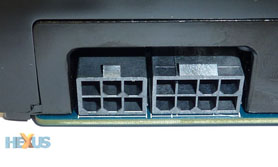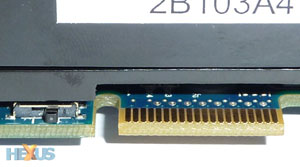The card
Sapphire Technology is patently waiting for AMD to release a slew of next-generation graphics chips. Up until that happens, which looks likely at the tail end of this year, Sapphire's engineers are endevouring to make the most out of current crop of 6-series GPUs.
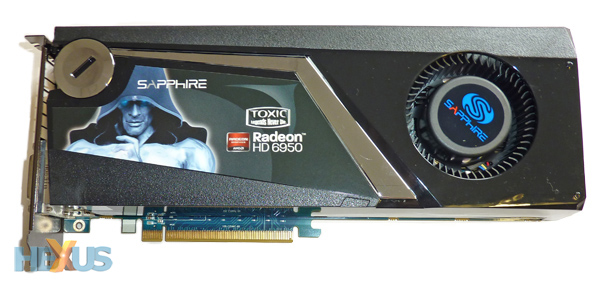
Positioned as the 'world's fastest' Radeon HD 6950 2GB card is the TOXIC version, above. Sapphire is hoping to exploit the pricing sweetspot that exists between the 6950 and 6970.
The TOXIC's 880MHz core and 5,200MHz speeds are impressive, almost matching the default clocks of a Radeon HD 6970, though Sapphire's beastie ships with a standard HD 6950-matching 1,408 cores. Spelling it out:
| GPU | Shaders | Core Clock | Memory clock |
|---|---|---|---|
| AMD HD 6950 2GB | 1,408 | 800 | 5,000 |
| Sapphire HD 6950 TOXIC | 1,408/1,536* | 880 | 5,200 |
| AMD Radeon HD 6970 | 1,536 | 880 | 5,500 |
See, the card falls between the two Radeon parts.
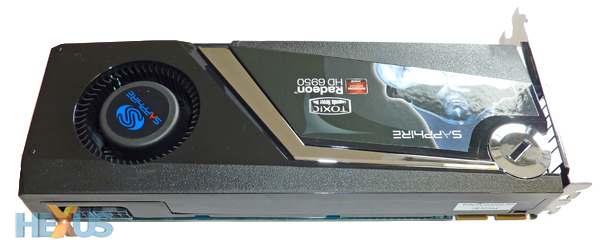
Extending the hybrid nature of this card, it uses a HD 6970-like PCB. We know this because it's outfitted with both six-pin and eight-pin PCIe power connectors on the left-hand side.
Look to the right and two CrossFireX fingers bring multi-GPU usage into play. Rather more interesting is the BIOS switch, found on Cayman-class cards, which can load a second BIOS profile with higher frequencies and more shaders.
Sapphire reckons that you should be able to flick the switch over and activate the extra cores, from 1,408 to 1,536, to make this TOXIC into a Radeon HD 6970-esque card.
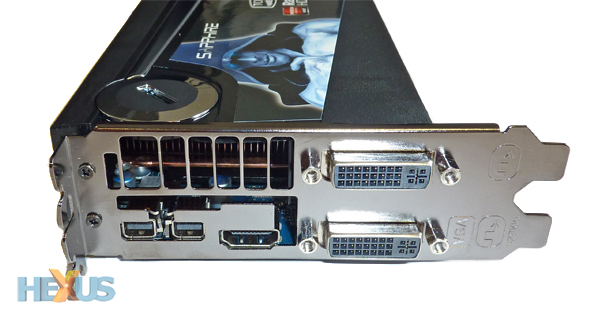
But there's more, folks, because this card is outfitted with a new type of rear bracket that, Sapphire says, enables more hot air to be exhausted out of the back. The premise is simple: just add more space for the air to escape from. It makes sense as the cooler is otherwise fully enclosed inside the plastic cover.
Two mini-DisplayPort, HDMI and dual DVI ports are standard fare. Readers who are lucky enough to run two 30in (DVI) monitors need to know that only one DVI port supports dual-link transfers.
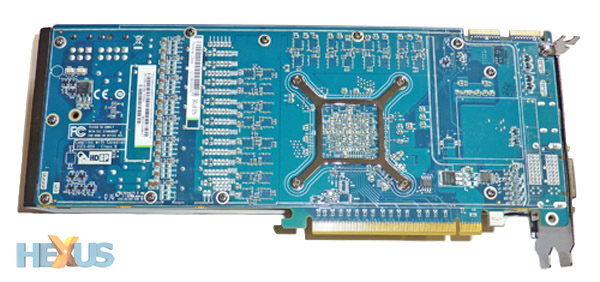
2GB of GDDR5 memory is all on the upside. Really, this is a Radeon HD 6970 card in all but name. The PCB and cooling are practically identical to one of Sapphire's HD 6970's.
The company includes an HDMI cable, miniDP-to-full-DP cable, eight-pin PCIe connector running from a couple of Molexes and a Steam-redeemable coupon for DiRT 3. We're informed the card will be priced at £235 or so, neatly bisecting the two high-end Radeons'.
Trouble in paradise
The specifications are impressive enough but we ran into a wrinkle during testing. You see, by default, the card is set to run at 880MHz core and 5,200MHz memory when gaming, which all makes sense. However, load up a game and the performance isn't quite what it should be, going by previous results obtained from Radeon HD 6950/70 cards.
Examine further and it transpires that the TOXIC card constantly modulates the core frequency when under load, something which shouldn't happen unless it's crossing some power threshold. Sapphire informed us the card needs more power than a regular HD 6950 2GB part, meaning that AMD's PowerTune Technology kicks in when gaming, and this is why the core clock's frequency changes constantly.
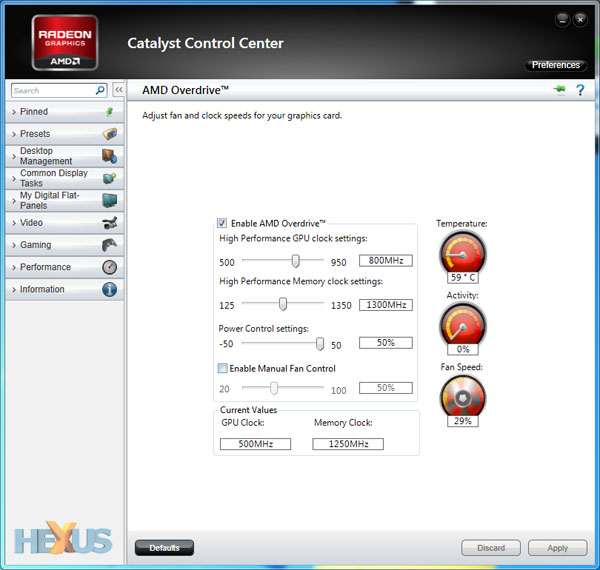
The only way around this is to delve into the Catalyst Control Centre, enable Overdrive, and then manually set the Power Control bar to +50 per cent. Doing so increases the amount of power deliverable to the board before it begins throttling the core frequency. Testing shows that having a +50 per cent rating enables the TOXIC to run at 880MHz core during gaming.
We're surprised and disappointed that users need to manually configure the control panel before the card attains the stated (pre-overclocked) core frequency; it should be taken care by a revised BIOS and Sapphire-specific Catalyst driver.
BIOS switch
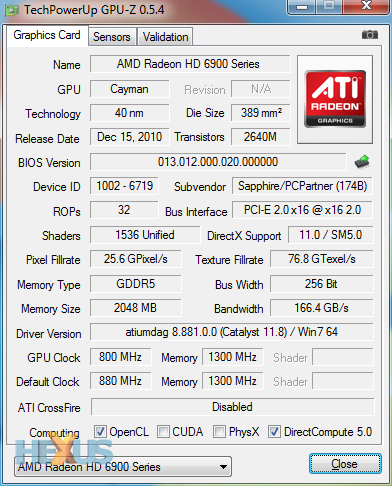
Flick over the switch and, on our sample, the extra HD 6970-matching shaders present fine. The problem here is that even with Power Control set to +50 per cent, the maximum core frequency is locked to 800MHz. One has to go an extra step and manually force an 880MHz core speed in the Overdrive section, intimating complete user-based overclocking.
Summary
Sapphire's Radeon HD 6950 TOXIC 2GB claims to be the world's fastest card of its kind. That's true enough, we suppose, but one needs to jump through unnecessary hoops to ensure that it does run at stated speeds.






